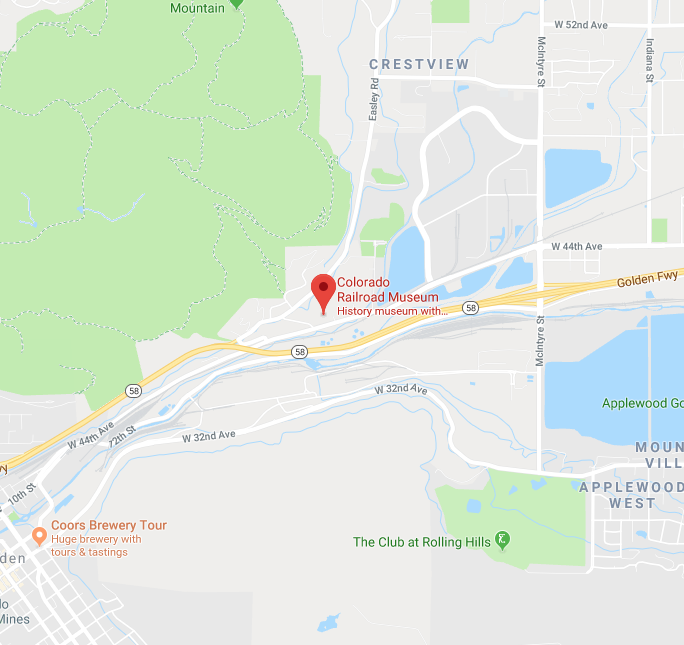It is hard to believe that Thanksgiving is later this month! But here we are, in November of 2021… time is just plain different when the world is experiencing a pandemic. As we approach our second pandemic Thanksgiving, we at the Colorado Railroad Museum hope you and your family somehow find a safe way to be together this year. Perhaps you will invite oysters to your Thanksgiving table, too?
Oysters, you say?! For this month’s posting, we are sharing recipes for oyster dressing, or as some folks call it, oyster stuffing. With so many ways to fill a turkey, oysters may not be at the top of everyone’s list, however they were once all the rage. One only has to look in a 19th century cookbook to find oodles of oyster recipes– stewed oysters, fried oysters, broiled oysters, fricaseed oysters– people in the 19th century simply loved them (see figure 1). It’s not just the Victorians, either, as oyster shells are found in middens (ancient trash pits) throughout the coasts of the Unites States, dating back almost 9,000 years.
As you can see in the following figure from 1835, oyster bars were popular even in the early days of the 19th century in the Unites States and abroad. So, why were these rough bivalves so popular amongst Victorians, and where do trains fit into the story? Believe it or not, it’s not because they make pearls, although that was an added bonus!
Prior to the 1800s, in the United States oysters were harvested and eaten in the coastal regions. Chesapeake Bay is particularly famous for oysters, however they can be found all along the Pacific, Atlantic, and Gulf coasts. As oysters have a very short shelf life, they could only be consumed within about a day of their being harvested. Enter the railroad, and more specifically, the refrigerated boxcar.
The first insulated boxcars appeared around 1850. Early insulated cars were most successful in cold weather because their sawdust, animal hair, or sometimes dirt insulation was not that efficient. Ice was harvested from natural resources, and obviously, it was not readily attainable in most areas during the warmer months of the year. It wasn’t until the 20th century that refrigerated boxcars really became adequate for transporting perishable foods. As refrigerated boxcars, or “reefers”, became more efficient, there was an uptick in the service of perishable food on dining cars.
Oysters were a common menu item aboard early dining car menus from the mid to late 1800s, usually as an appetizer. Specialized oyster plates, like the one pictured below, became popular in Victorian households as well as in dining cars. Later, the Pullman Company served oyster dressing inside of its Thanksgiving turkeys, in addition to plated raw oysters, or Oysters Rockefeller. The Union Pacific also served oysters inside Thanksgiving turkeys, but they called the concoction “stuffing” rather than dressing.
Thanks to refrigerated boxcars, fresh oysters became available throughout the country. From 1880 to about 1910 was the heyday for oyster harvesting. It is estimated that roughly 160 million pounds of oysters were harvested and eaten during that time. The popularity of oysters in the 1800s spanned both rich and poor, as oysters were so ubiquitous, they were also inexpensive. New Yorkers in the 1800s ate roughly 600 oysters per person, per year, whereas today the average American eats maybe 2-3 oysters in a year.
Part of the decline in oyster popularity has to do with overharvesting around the turn of the 19th-20th century, but there were other factors at play, too. By the time the 1920s came around, there was a huge drop in oyster consumption. As oysters were often eaten in bars like popcorn or peanuts are today, with the closure of bars during Prohibition, oyster consumption took a significant hit. Public perception also played a factor in the drop in oyster consumption. Just like the meatpacking industry dramatically changed when the Pure Food and Drug Act was passed in 1906, so did the oyster industry. It became clear at that time that improperly handled shellfish, or shellfish harvested at the wrong time of year (i.e. the Red Tide) could carry disease, and thus consuming oysters, raw or cooked, became more taboo.
Love them or hate them, oysters are still around today. For some people, they might only appear once a year in their Thanksgiving turkey stuffing (or dressing). Will you be partaking in oyster stuffing or dressing this year? If you try either the Pullman or Union Pacific recipes below, please share how it tastes via our Facebook, Instagram, or Twitter accounts. Happy Thanksgiving!
***
Pullman Company Oyster Dressing
Ingredients:
1 lb. loaf of stale white bread
½ cup celery, finely chopped
¼ cup onion, minced
1 tablespoon butter
1 tablespoon chopped fresh parsley
2 tablespoons poultry seasoning
1 tablespoon salt
12 oysters
3 eggs, hard-boiled and chopped
Instructions:
Break one-pound loaf of stale white bread without crust into small pieces and wet with cold water. Melt butter in frying pan and sauté the celery and onion. Add the parsley, poultry seasoning, salt, and chopped eggs to the celery/onion mixture. Shuck the oysters, reserving their “liquor” or the liquid found in their shells. Lightly poach the oysters. Squeeze the water out of the bread, and then mix the bread, oysters, and celery/onion mixture together. Add oyster liquor to your liking to the dressing mixture. Stuff into cavity of your turkey and truss. Bake according to the size of your turkey.
Recipe adapted from Dining à la Pullman: The History of Pullman Dining Service, 1866-1968 by Terence Mulligan, Peter Tilp, and Karl Zimmerman. Garbely Publishing: 2019.
***
Union Pacific Roast Turkey with Oyster Cornbread Stuffing
Ingredients:
One 10oz package of cornbread mix
10 cups fresh bread cubes (14 slices)
2 tablespoons of minced onion
1 tablespoon of rubbed sage
2 teaspoons of salt
1/8 teaspoon of pepper
2 10-oz cans of oysters
½ cup butter or margarine, melted
½ cup water
20 pound turkey
Mushroom Gravy (recipe below)
Instructions:
Prepare cornbread mix according to package directions. Cool and crumble. Toss with bread cubes, onion, sage, salt, and pepper. Drain oysters, reserving ½ cup of liquid. Chop oysters; add to bread mixture, with reserved oyster liquid, melted butter or margarine and water, tossing well. Salt the cavities of the turkey, fill with stuffing, and tie the legs to the tail. Place, breast side up, on rack in shallow roasting pan. Cap loosely with foil. Roast in 325˚ oven for 6 to 6 ½ hours. Uncover last 45 minutes; cut band of skin or string between legs and tail. Let stand 15 to 20 minutes before carving. Serve with Mushroom Gravy.
Mushroom Gravy
Skim fat from pan drippings. Add enough water to juices to make 1 ½ cups liquid. In screw top jar, put ½-cup cold water and ¼ cup all-purpose flour. Shake mixture well. Stir flour mixture into juices; cook, stirring constantly, until gravy thickens and bubbles. Add one 6oz can of sliced mushrooms, drained. Season with a little salt and pepper. Simmer 2 to 3 minutes, stirring occasionally. Makes 2 cups.
From Union Pacific Dining Car Cookbook and Service Instructions. Union Pacific Company. Mid-20th century.
Past Dining on the Rails Posts:
Dining on the Rails: October – Chicken Pot Pie
Dining on the Rails: September – Chili
Dining on the Rails: August – Pullman “Tom Collins” Cocktail
Dining on the Rails: June – How about a salad?
Dining on the Rails – Atchison, Topeka & Santa Fe Ham!
Dining on the Rails: CRI&P’s New England Boiled Dinner
Dining on the Rails: A Sweet Treat for your Valentine!
Dining on the Rails: Black Eyed Peas!
Dining on the Rails: Eggnog
Dining on the Rails: Happy Thanksgiving!
Dining on the Rails: Union Pacific Apple Pie
Dining on the Rails, August 2020
Dining on the Rails, July 2020
Dining on the Rails, June 14, 2020
Dining on the Rails, June 7, 2020
Dining on the Rails, May 31, 2020
Dining on the Rails, May 24, 2020
Dining on the Rails, May 17, 2020
Dining on the Rails, May 10, 2020
Dining on the Rails, May 3, 2020
Dining on the Rails, April 26, 2020
Dining on the Rails, April 19, 2020
Dining on the Rails, April 12, 2020








